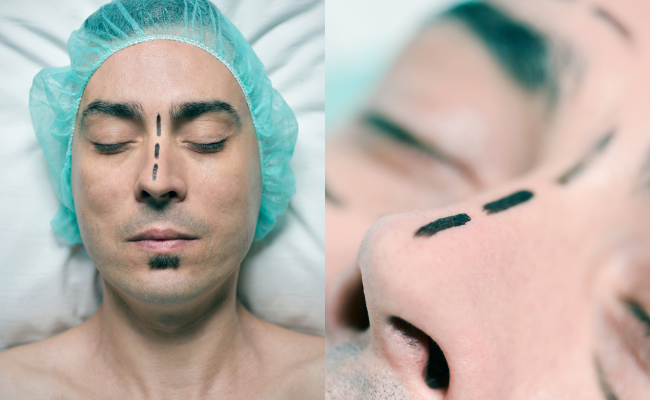How to Treat Deviated Septum?
- November 01, 2023
- No Comments

What is a Deviated Septum?
A deviated septum, a common nasal condition, occurs when the thin wall dividing the nostrils is displaced, leading to one nasal passage being smaller. While a slight deviation is normal, significant misalignment can impact breathing, sinuses, and overall well-being. Congenital or injury-induced, deviated septums often contribute to breathing difficulties and sinus issues.
This condition arises when the bone and cartilage forming the nasal septum aren't perfectly centered, dividing the nasal cavity into two sides and creating two nostrils.
Remarkably common, affecting up to 80% of the population, many individuals may not realize they have a deviated septum, as it can be asymptomatic. For some, it can cause breathing difficulties, headaches, and related issues, emphasizing the need to recognize and address this prevalent nasal condition.
Why Does a Deviated Septum Matter?
The significance of a deviated septum lies in its potential to affect various aspects of respiratory and sinus health. The deviation can result in:
- Breathing Difficulty: The narrowing of one or both nasal passages can make breathing challenging, especially during physical activities or while sleeping.
- Sinus Issues: Impaired airflow can lead to sinus congestion, increased susceptibility to sinus infections, and chronic sinusitis.
- Sleep Disruption: Difficulty breathing may result in snoring, sleep disturbances, or even contribute to conditions like sleep apnea, impacting the quality of sleep.
- Facial Pain: Chronic facial pain or headaches can arise due to sinus congestion and pressure, affecting an individual's daily life.
How is a Deviated Septum Diagnosed?
A deviated septum is typically diagnosed by an ear, nose, and throat (ENT) specialist. The diagnostic process involves:
- Physical Examination: A visual inspection of the nasal passages using a lighted instrument to assess the alignment of the septum.
- Nasal Endoscopy: A thin, flexible tube with a light and camera is used to examine the nasal passages in detail, providing a comprehensive view of any deviations.
- Imaging Studies: In some cases, computed tomography (CT) scans may be ordered to evaluate the extent of the deviation and its impact on sinus structures.
How to Treat a Deviated Septum?
- Nasal Decongestants: Over-the-counter nasal decongestant sprays can provide temporary relief by reducing nasal swelling and improving airflow. However, prolonged use is discouraged due to the risk of rebound congestion.
- Antihistamines: These medications help manage allergies and reduce nasal inflammation, providing relief from symptoms associated with a deviated septum.
- Nasal Corticosteroids: Prescription or over-the-counter nasal corticosteroid sprays can effectively reduce inflammation, enhancing breathing.
- Septoplasty: Surgical intervention, known as septoplasty, is a common and highly effective treatment for a deviated septum. During this procedure, the surgeon straightens and repositions the nasal septum to improve airflow.
- Turbinate Reduction: Enlarged nasal turbinates, structures that help humidify and filter inhaled air, can contribute to nasal obstruction. Reduction procedures can be performed to address this issue.
- Balloon Sinuplasty: This minimally invasive procedure involves inflating a small balloon in the sinus passages to widen them, promoting better drainage and airflow.
- Functional Rhinoplasty: In some cases, functional rhinoplasty may be recommended to address both the aesthetic and functional aspects of the nose, improving appearance and airflow simultaneously.
Benefits of Treating a Deviated Septum:
- Improved Breathing: The primary benefit is enhanced nasal airflow, making it easier to breathe through the nose.
- Reduced Sinus Issues: Treatment can alleviate sinus congestion, reduce the frequency of infections, and improve overall sinus health.
- Better Sleep Quality: Addressing breathing difficulties can lead to improved sleep quality, reducing issues like snoring and sleep apnea.
- Relief from Facial Pain: Alleviating nasal congestion can help reduce chronic facial pain and headaches associated with sinus pressure.
- Enhanced Quality of Life: By addressing the symptoms and complications associated with a deviated septum, individuals can experience an overall improvement in their quality of life.
Comments (0)